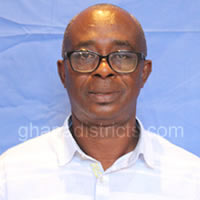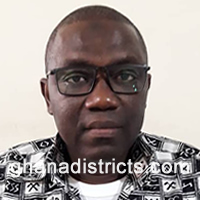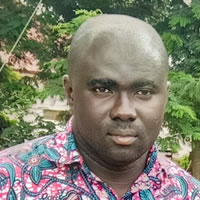MONITORING AND EVALUATION ACTIVITIES REPORT
Within the year, the Municipal Assembly through the MPCU monitored and reported on a number of projects and programmes that were implemented.
Project/Programme Status for the Period October – December, 2017
This progress report covers the status of implementation of physical/development projects and programmes (pro-poor interventions) that were carried out within the Municipality as at 31st December, 2017. In total, Forty-four (44) projects and programmes were being implemented and monitored as detailed out in table 4 below.
2.1 Location of Projects
Out of the Forty-four (44) projects and programmes being implemented, sixteen (16) of them, representing 36.36% were located in Goaso the Municipal Capital while the remaining Twenty-eight (28) representing 63.64% were fairly spread across the municipality. The fairly spatial distribution of the projects and programmes arose out of the need to meet the needs of rural communities and reduce the rate of rural-urban migration in the municipality.
Sectorial Distribution of the Projects
From table 4 below, Education took chunk of the total investment within the period with a percentage 31.82. It was followed respectively by Governance and Security with 27.27%, Health had 13.65%, Road had 11.36%, Water and Sanitation had 6.82 whilst Economic and Energy/Electricity had the least of 4.54% each. It is important to note that water and electrification were going on in a number of communities but were lumped together as one project as each was awarded as a single contract.
Pace of Work
Out of the Forty-four (44) projects listed, 20 representing 45.45% were completed, 22 representing 50% were on-going and at various levels of completion whilst 2 projects (4.55%) were either suspended or was yet to start.
Source of Project Funding
The projects and programmes were funded from District Assemblies Common Fund (DACF), Donors UDG/ DDF/SIF, Central Government, BOT (PPP) and joint IGF and others. District Assemblies Common Fund (DACF) sources emerged as the main financier of development projects in the Municipality representing with 44.2 %, Donors (DDF/UDG/SIF & others) was next financier with 30.2% and followed by Central Government (GET fund GOG) with 16.3%, District Assemblies Common Fund (DACF), Stool lands and IGF funding recorded 7.0% and PPP with 10.5% of the cost of funding development projects and programmes. Table 5 below provides the details of the findings.
Payments
The total cost of the Forty-four (44) projects sums up to Seven Million, Three Hundred and Eighty-Seven Thousand, Seven Hundred and Seven-Eight Ghana Cedis and Six pesewas (GH¢7,387,778.6). Out of this contractual commitment, Three Million, Three Thousand, Eight Hundred and Ninety-Eight Ghana Cedis and Eight pesewas (GH¢3,003,898.8) representing 40.7% had been paid with a debt stock of One Million, Three Hundred and Sixty-Four Thousand, Four Hundred and Forty-One Ghana Cedis and Nine pesewas (GH¢1,364,441.9) representing 18.5%. The huge bill is mainly due to delay in the release of the DACF and delay in contract execution by the contractors especially for the donor funded projects like UDG.
NB: Payments of Road Projects, GETFUND and some GOG Projects are made from national level and hence were excluded from the above analysis.
Way Forward
• In the selection of contractors, the adverts and bid documents inviting prospective contractors should put premium on the financial standing of prospective contractors. The strong financial standing of contractors can leverage progress of work as they are in a position to pre-finance execution of contract before payments are made.
• MA should intensify its project inspection and monitoring to keep contractors on their toes to deliver as per the time schedule.
Date Created : 12/5/2018 6:01:37 AM






 facebook
facebook X (twitter)
X (twitter) Youtube
Youtube +233 593 831 280
+233 593 831 280 0800 430 430
0800 430 430 GPS: GE-231-4383
GPS: GE-231-4383 info@ghanadistricts.com
info@ghanadistricts.com Box GP1044, Accra, Ghana
Box GP1044, Accra, Ghana